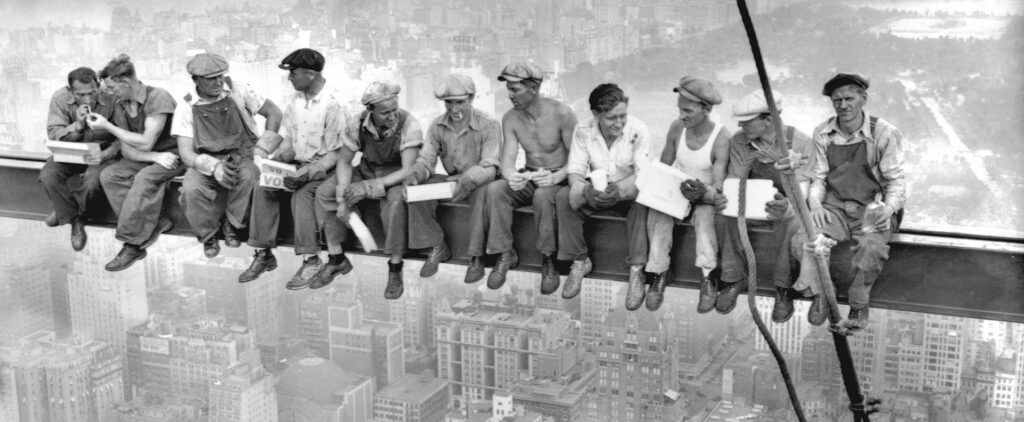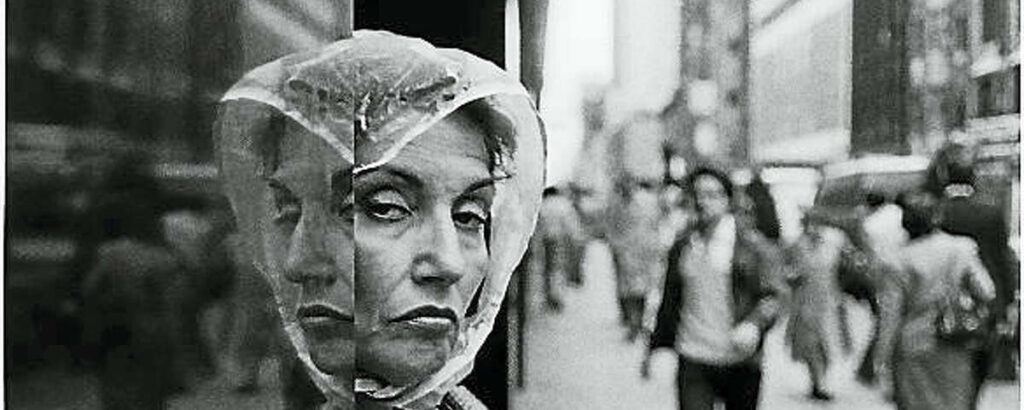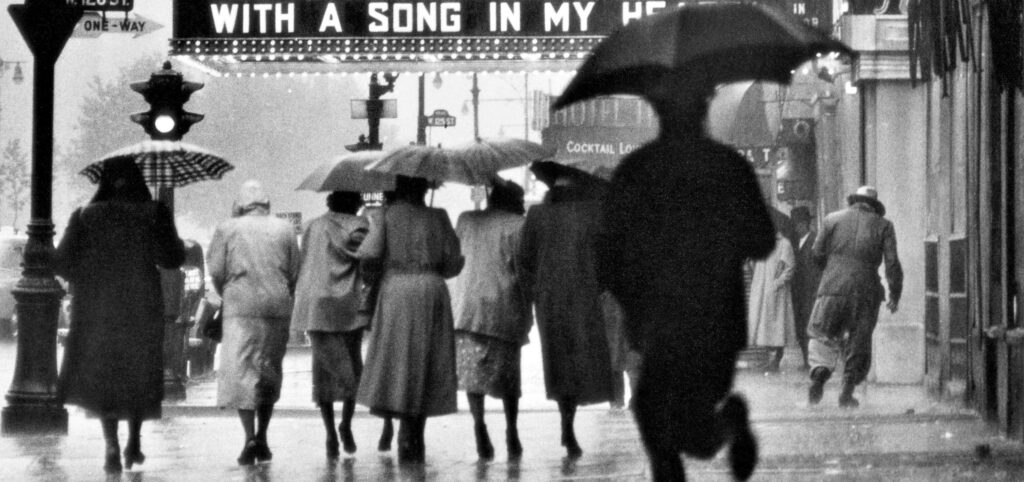
NEW YORK CITY

PEOPLE
The accent varieties of New York City have received a great deal of attention over the years, both scholarly and popular. We have all grown up hearing, and noting accents that purport to exemplify New York speech, from actors, comedians, or cartoon rabbits. Linguists too have been fascinated by the accents of New Yorkers and have been working to catalogue the features of that accent for more than a century. A great deal is known, but accent, like all human behavior and culture, is complex, and though we can make some generalizations, there is so much variation within groups that we will never be able to pin down.
On this page we will build a picture of the features that unify many of the varieties of New York speech. An actor working on a particular vocal characterization for a role will need to specify and develop choices based on their character’s socioeconomic status, aspirations, ethnic background, etc. but the features described here should serve as a starting point.
New York City is, of course, home to numerous people from a wide range of backgrounds. The accent we’re trying to connect with here is what we might call the local accent. The features of this accent are usually associated with covert prestige, and could give the impression that the speaker is working class and white, and possibly from an earlier period than the present day. Nontheless, it is in now way exclusive to people with those identities. As with all accents of the working class, we should be cautious not to recapitulate in our thinking about these speakers, stereotypes of lower intelligence, vulgarity, or violence.

POSTURE
Perhaps the most readily apparent feature of the New York oral posture is lip protrusion. A certain holding in the peripheral fibers of the orbicularis oris muscle keeps the lips poised loosely forward. The dorsum of the tongue tends generally back and up. The combination of these two postural tendencies makes the New York realization of the GOOSE vowel a particularly useful touchstone for connecting with the feel of this accent. A general nasality is also quite common and so it is also valuable to consider a heavy velum part of this oral posture.
PROSODY

PROSODY
The most common stereotype of the prosody of this accent is the notion of the “fast talking New Yorker.” A Google search for the term “fast talking New Yorker” returns 14,700 hits. The few studies that set out to measure variation in rate of speech between different accents however, fail to establish any foundation for this stereotype.
So what is it that leads to this impression of rapid New York speech/ It could be that the loud and bustling streets of Manhattan give such a sense of unceasing forward motion that we apply that quick and energetic impression to the speech pattern of New Yorkers as well. It may also be that we’re hearing a narrower pitch range, and less variation in vowel length give us the idea that the New York speaker isn’t dawdling.

PRONUNCIATION
VOWEL FEATURES
TRAP (BATH) → tɹæp – hæ͂ŋ – læ̝͂͂ə̆f
The split in vowel categories that created the BATH set didn’t occur in the US, so our starting point should be a single TRAP lexical set that contains the BATH category. New York has a split in the TRAP lexical set. William Labov described this split as a distinction between tense and lax realizations, and he described the conditions for this split as follows:
æ is lax (realized as [æ] )when followed in the same syllable by:
| /p/ | /t/ | /ʧ/ | /k/ | /ŋ/ | /v/ | /ð/ | /z/ | /l/ | nothing |
| trap apple scrap | cat bat mat | batch match latch | back tack actor | hang anger tang | average havoc cadaver | lather gather rather | has jazz Lazarus | pal alibi dally | carry planet |
æ is tense (realized as [æ̝͂͂ə̆] when followed in the same syllable by:
| /b/ | /d/ | /ʤ/ | /ɡ/ | /m/ | /n/ | /θ/ | /f/ | /s/ | /ʃ/ |
| slab absent crab | bad mad adverb | bad mad adverb | bag stag ragged | ham ample stamp | man land anchor | bath math Cathy | laugh after graph | pass master last | bash fashion trash |
Listen!
Practice!
Actually, that cat was my pal.
Maslow happily matched my arrows with his fangs.
Randy was absolutely magic last night.
Cathy laughed so hard she passed gas.
Did you leave a ham sandwich in the trash bag?
LOT ≠ CLOTH → lɑt klɔə̹ θ̆
CLOTH = THOUGHT (NORTH) → klɔə̹θ θɔə̹t nɔə̹θ
Unlike accents of the Western United States that tend to merge these sets into a single, unrounded open back vowel, or RP that groups LOT and CLOTH separately from THOUGHT, New York makes a clear distinction between the unrounded LOT and the similarly rounded CLOTH/THOUGHT. This rounded form also exhibits “breaking”: a shift in vowel shape that makes a monophthong into a diphthong. What makes this rounded CLOTH/THOUGHT vowel distinct in realization from the American Southern versions is that this sound begins in a more rounded posture and transitions to a less rounded shape.
Listen!
Practice!
Don stopped boxing last October, so obviously seeing a doctor isn’t an option.
There’s no more coffee in the office, and my dog is long gone
GOOSE → ɡuːs
This vowel stands out as different to the growing trend in Western US accents as it remains fully back and fully rounded.
Practice!
You knew Lou Reed? Who are you trying to fool? You stupid mook!
PRICE → pɹḁ̈ ɪs̆
This diphthong starts in a somewhat backer place. J.C.Wells hears it as overlapping with the Cockney realization, but that’s a bit too strong a statement. It’s worth noting though, that the realization can vary based on stress and consonant context.
Listen!
Practice!
Alright, so Michael’s a wise guy, right? But I like him. He’s a nice guy.
RHOTICITY
Historically, New York is home to non-rhotic accents, and a fully non-rhotic form of speech is still in use there. Nonetheless, lack of rhoticity can be stigmatized, so speakers from non-rhotic communities could feel some pressure to add postvocalic /r/ and might have variable success. Alternatively, there’s enough rhoticity floating around the city and in the media that there are entirely native rhotic versions of a New York accent For our purposes, it’s best to establish a position that is completely without postvocalic /r/ and then experiment with increasing rhoticity until we find the characterization we’re looking for.
START → stɑːt stɑə̆t stɑə̹ t̆
This diphthong can vary from a fully monophthongal /ɑː/ to more diphthongal versions, including a variety with lip rounding.
Arthur started a barbershop in his apartment. So he needed a large parking garage for the cars
NORTH → nɔə̹θ̆
There is no distinction between NORTH and FORCE, and both are entirely non-rhotic. This diphthong merges with THOUGHT and CLOTH so that “flaw” and “floor” are homophones. Before the divorce, George Foreman ordered organic sausages. The orchestra was informed of the source of the storm
LOT+R → hɑɹə
Many American accents treat word like “orange” or ´horror” as NORTH/FORCE words. JC Wells, though, classifies them as CLOTH words, with the /r/ starting the next syllable. In this accent, though, the vowel is realized more like LOT.
The oranges in Florida are horrible.
CURE → kçʊə̆ kçɔə̆
The older form of the diphthong /kçʊə/̆ still lingers in NY. It may drift to a more open form, but it doesn’t merge with NURSE as it would in other American accents. Even in an unstressed position, a bit of lip rounding is detectable.
Poor Lurid tourists! They’re sure furious.
SQUARE → skwɛə̆ skwɛə̆ skwɛ.ə
This diphthong is non-rhotic, and can sometimes be “smoothed” so that the second element of the diphthong is minimized. When strongly stressed it can break into two syllables.
There’s a bear over there! Yeah? Where?
NEAR → nɪə̝͂ ̆ nɪ.ə
Similarly non-rhotic, this diphthong can be more resistant to smoothing.
I hear he has a fierce beard.
NURSE → nɜs nɝs nɜɘs̆ nɜɨs̆
Even in the most non-rhotic versions of this accent, the NURSE set bucks the trend. The description of NURSE as rhotic, however, doesn’t quite describe the variety of possible realizations. In unstressed positions /ɜ/ is possible. An older form uses an action similar to the centering movement of rhotic diphthongs, but without the tongue bracing, producing a diphthong [ɜɨ]̆ that comes close to CHOICE. This is why some theatrical versions of the accent imagine “thirty” as “toidy” and “toilet” as “terlet.”
The nerve of that German girl! Her words were perfectly poisonous. I heard Bertha was a nurse.
lettER → ˈlɛtə̬
Even in accents with rhoticity in other lexical sets, the unstressed nature of this phoneme, leads to a non-rhotic realization here. This can sometimes be the last evidence of a non-rhotic accent in the process of being rhoticized.
Elision (Linking R or R-Sandhi)
As with other non-rhotic accents, the “dropped /r/” will reassert itself when followed immediately by a vowel. This happens between words and when the /r/ is between syllables in a word.
My brother is wearing four or more underarm deodorants.
Intrusive R
This rule is also applied by speakers of nonrhotic accents in situations where no “r” is present in the spelling, but where the merger of two sets has created the same phonetic realization.
lettER = commA → “dinner is ready” = “Donna is ready”
START = PALM → “the spar is broken” = “the spa is open
NORTH = THOUGHT → “the floor is visible” = “the flaw is visible
Persistent Reduction
inTO → ɪntə the → ðə roses→ɹoʊ̆zəz
Some accents retain the lip rounding of unstressed /u/ sound when the next syllable begins with a vowel. Similarly, the word /the/ will be pronounced [ði]̽ when followed by a vowel. New York accents resist this, pronouncing these words more consistently with a schwa. In the same way, unstressed syllables are more likely to be reduced to a schwa, making “Rosa’s” and “roses” homophones.
The elephant believed that the only way to open the cages was with the hoses.
Consonant Features
“Dropped G” -ing→n̩
This is isn’t really a “dropped g” but rather the replacement of /ŋ/with /n/ in gerunds. The ‘ing” ending in gerunds is usually unstressed, so this feature occurs primarily there, but not where “-ING” ends a stressed syllable. This is a form of assimilation and is common in all informal English speech.
The king was taking a beating. Starting the meeting by debating herring fishing was relaxing.
_t_ → _ t̬_
In medial positions the alveolar plosive is voiced. This occurs throughout the United States, and in this accent is seems less stigmatized, and so the plosive is perhaps more definitively voiced.
Walter’s pretty little for a British writer, but his letters are beautiful.
t→ t̻
The alveolar plosive can be formed laminally. This is most obvious in initial positions.
Tony took a bat to the terrorists toes. Typical Tony!
θ/ð → t̪
These fricatives can be shifted to dentalized plosives.
Think of all those thirty thousand mothers and fathers who thought that they’d leave their kids in the bathtub.
ç →j
This fricative is commonly realized as a voiced approximant.
Humor me Hugo. Human beings aren’t used to this humidity.
ASSIMILATION
All accents are subject to assimilation and deletion of sounds in the right conditions. Although potentially problematic for a theatrical accent, there is certainly a tendency towards simplification of complex articulations. This accent goes further than others.
One of the greatest strengths of the capitalist structure of government is its entertainment industry.
You’re probably wondering about the temperature of those fundamentalists, because about a hundred of them came in here about twenty minutes ago and said “Let’s go, you heathens!” and I had to interrogate them right here on the spot! I didn’t want to, but I thought I ought to.
